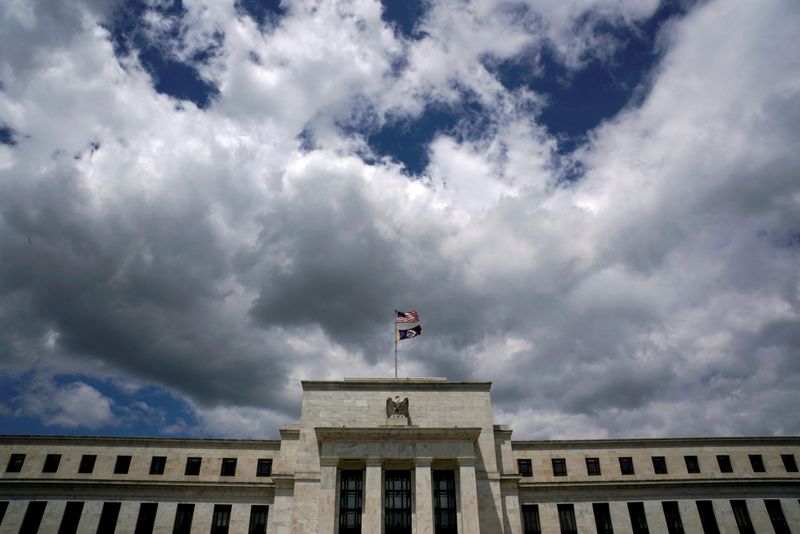(Reuters) - The Federal Reserve's decision to cut interest rates by half a percentage point on Wednesday marked the closest the central bank has come in launching an easing cycle on the cusp of a U.S. presidential election in nearly half a century.
While interest rate policy is rarely static during election years, kicking off a brand new rate-cutting phase with fewer than 10 weeks to Election Day has happened only twice before now - in 1976 and in 1984.
The U.S. central bank is an independent federal agency, and Fed Chair Jerome Powell and other policymakers consistently say political considerations - including approaching elections - do not factor at all in their decisions on interest rates.
"This is my fourth presidential election at the Fed," Powell said in a press conference following the Fed's policy meeting in late July. "(A)nything that we do before, during, or after the election will be based on the data, the outlook, and the balance of risks and not on anything else."
Not everyone is convinced.
Republican presidential nominee Donald Trump said earlier this year he thought the Fed might lower rates to help Democrats in the Nov. 5 election. Trump said last month that presidents ought to have a say over Fed decisions.
Vice President Kamala Harris, the Democratic presidential nominee, said only that she would respect the Fed's independence. "As president, I would never interfere in the decisions that the Fed makes," she said last month.
RATES IN ELECTION YEARS
The Fed has changed interest rates in all but two presidential election years dating back to 1972, and its actions have been closely divided between increases and reductions.
The policy rate has risen in five election years and fallen in six. In most cases those changes were part of cycles that had been set in motion a year or more before an election year.
The incumbent president or party controlling the White House won reelection in four of the five years rates rose in the run-up to Election Day.
The exception occurred in 2000, when Vice President Al Gore failed to keep the White House for the Democrats, and George W. Bush retook it for Republicans. Rates under then-Fed Chair Alan Greenspan had risen that year by 1 percentage point between January and the end of October, although the last increase had been in June, roughly five months prior to the election.
Meanwhile, the challenger to an incumbent president or party controlling the presidency won five of the six elections held in years when rates were falling.
The exception was in 1996 when incumbent Democrat Bill Clinton won a second term. Rates - again under Greenspan - were lowered by a quarter of a percentage point between January and Election Day, although the last cut had occurred at the start of the year.
The most rates have risen in an election year prior to the day ballots were cast is 2.56 percentage points. That happened in 1984 when the Fed under Paul Volcker's leadership was still grinding out the remnants of high inflation. Republican Ronald Reagan won reelection in a landslide.
The most they have fallen in an election year up to Election Day was 2.75 percentage points in 2008, when then-Fed Chair Ben Bernanke was slashing rates to cushion the blow of the global financial crisis. Barack Obama retook the White House for the Democrats.
The only two presidential election years since 1972 to see no rate changes were in 2012 and 2016. Obama won re-election in the first and Trump won in the second to retake the White House for Republicans.
NEW CUTTING CYCLES
As common as rate changes are in election years, brand new rate-reduction cycles - a series of cuts that follow either one or more recent rate increases or a pause of rate changes of at least five months - are less frequently begun on the doorstep of an election.
Before the Fed's announcement on Wednesday, there had been four since the 1970s, and in three of those the challenger won.

The most recent instance was the last presidential election in 2020. At the onset of the COVID-19 pandemic, the Fed under Powell's direction cut rates twice that March by 1.50 percentage points, bringing the policy rate to the near-zero level. Democrat Joe Biden narrowly defeated Trump in that election.
The closest to an election an easing cycle has begun was in 1976 when the Fed under Arthur Burns lowered rates beginning just four weeks before Election Day. How much of a factor that proved to be in Democrat Jimmy Carter's (NYSE:CRI) defeat of incumbent Republican Gerald Ford (NYSE:F) is unclear since rate decisions at that time were not publicly announced. Formal policy decision announcements only began in 1994.